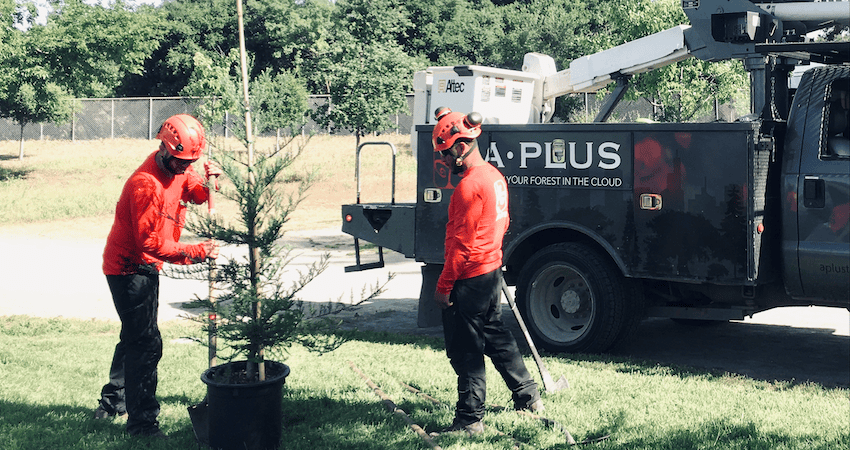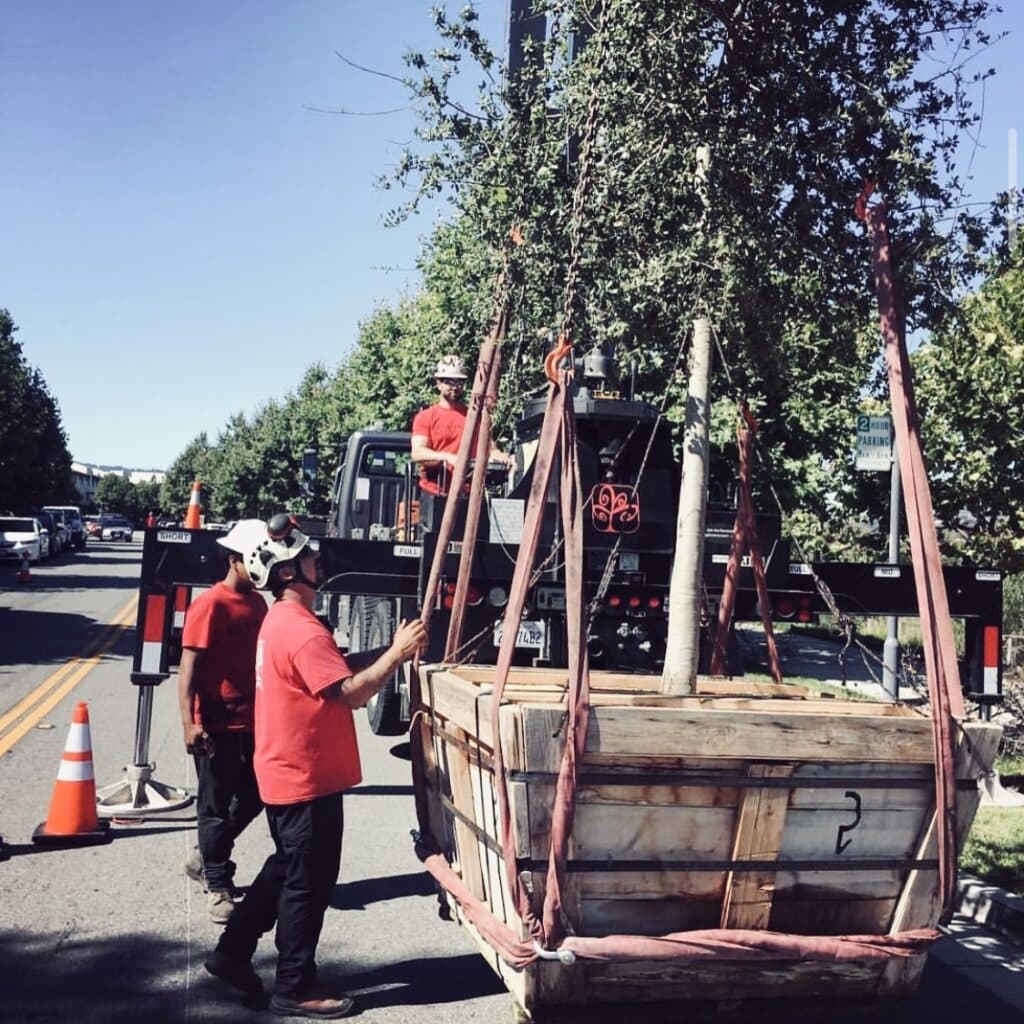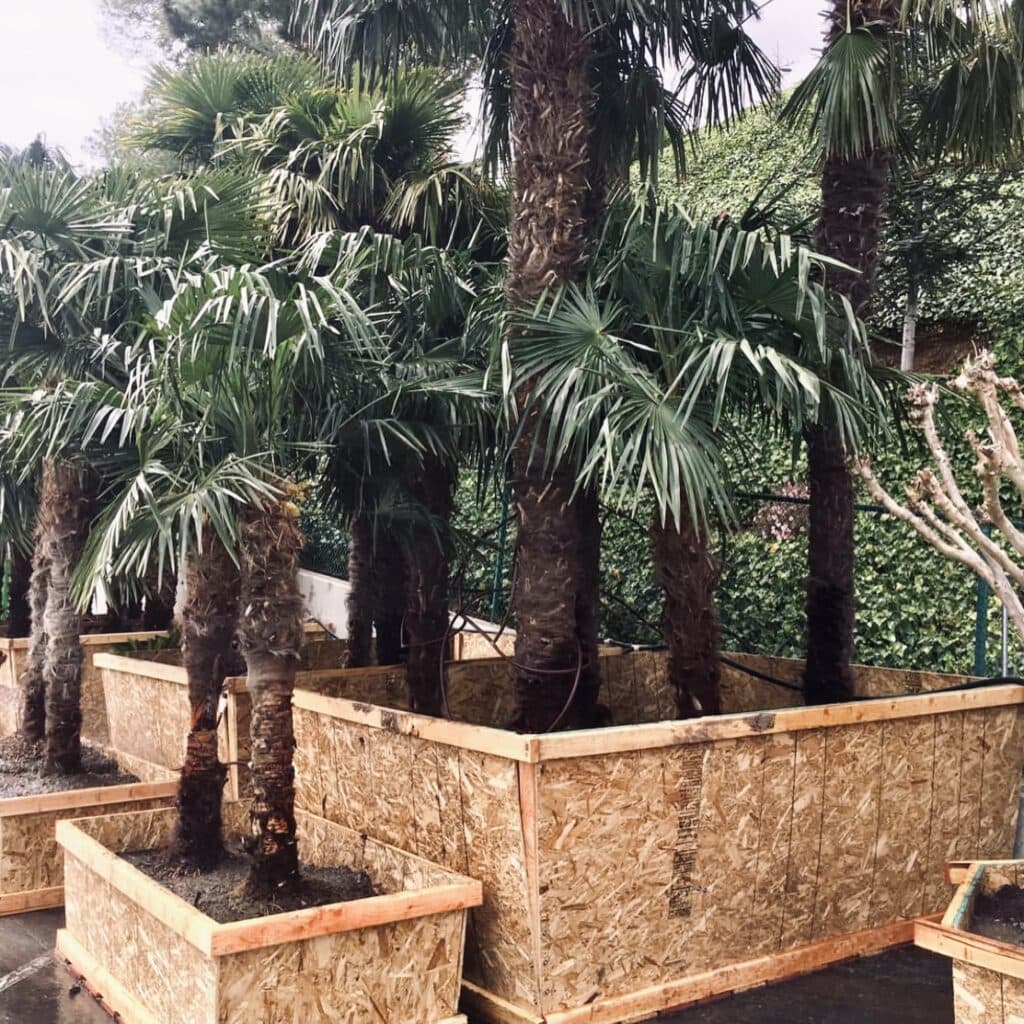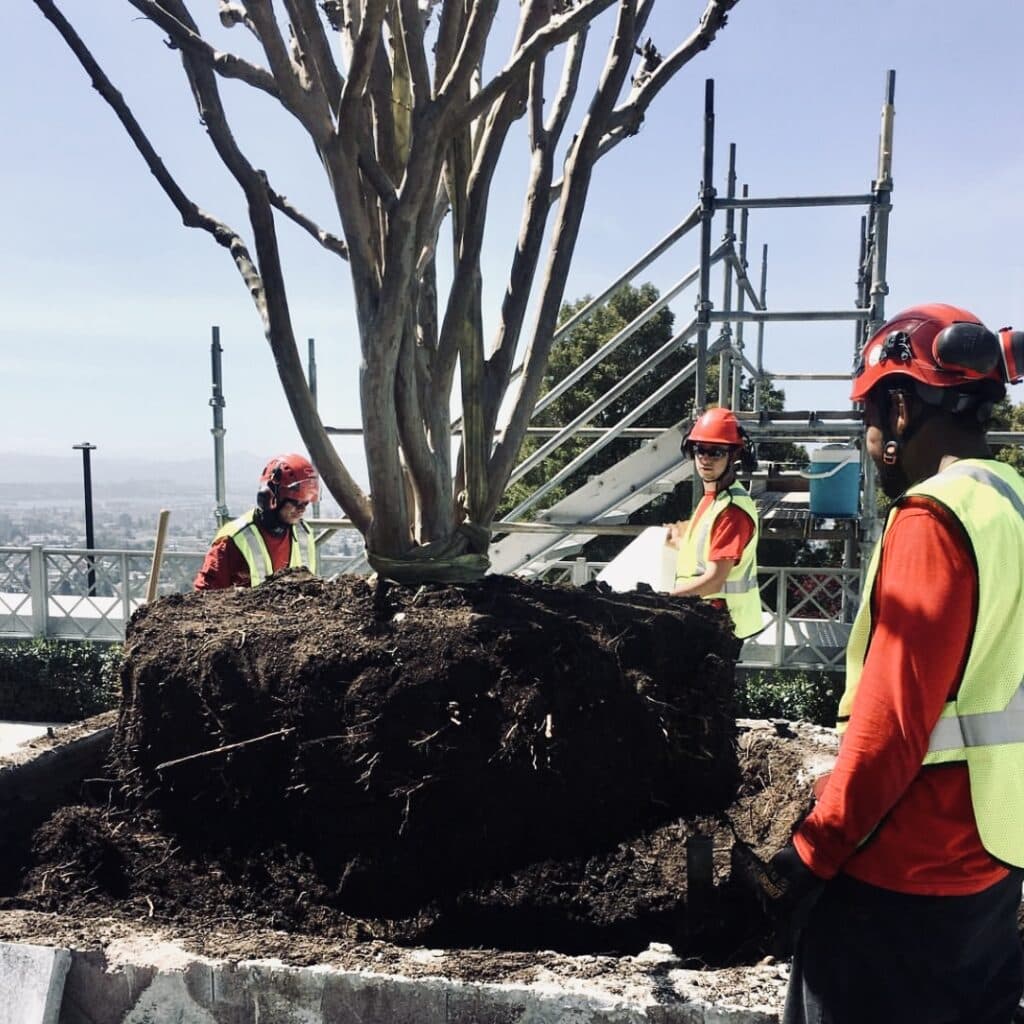Tree Planting, Moving, & Transplanting by Trusted Arborists
There’s a saying that goes, “The best time to plant a tree was 20 years ago”. There’s another saying that goes, “Better late than never.” So we’re not here to judge, we just like trees.
If you don’t know by now, trees are good. AND, if you haven’t noticed, everyone has hopped on the tree train where corporate and philanthropic do-gooders have initiatives to plant millions and billions of new trees across the globe.
So why not do your part?? We can help ya 😉

Why Should You Hire an Arborist to Plant a New Tree?
Trees are a long-term investment, so getting it right from the start is important! Arborists are here to help with trees. Trained in the study and care of trees, arborists have the know-how and expertise to ensure proper tree selection and planting for your location and desired tree assets. Arborist techniques go beyond digging a hole; they involve assessing soil conditions and utilizing specialized tools like soil augers and root barriers. These tools not only make the process efficient but also contribute to the safety and health of your investment.
A poorly planted tree can lead to failures or even damage, resulting in additional costs for removal and replacement. With arborist expertise, your tree isn’t just planted – it’s nurtured to turn your green investment into a lasting natural asset.
Choose A Plus for Your Tree Transplant Needs
Should you want or require a tree or plant to be relocated, our specialists are equipped to handle the multiple factors that must be acknowledged to safely and successfully transplant your tree. Relocating a tree is not a one-size-fits-all operation. Our arborists consider multiple critical factors, including the size and type of the tree, soil conditions, and the distance of the move. Tree moving takes specialized care and skill to minimize any harmful effects when transplanting the tree. We employ industry-leading techniques to ensure the tree’s health and survival post-relocation.
Tree Relocation & Transplanting
Should you want or require a tree or plant to be relocated, our specialists are equipped to handle the multiple factors that must be acknowledged to safely and successfully transplant your tree. Tree moving takes specialized care and skill to minimize any harmful effects when transplanting the tree.
When transplanting a tree, the rule of thumb is to cut roots no closer to the trunk than a distance equal to three times the trunk’s width. So if the trunk is 10″ in diameter (when measuring 4.5 ft from the ground) then the roots can be cut at a distance of 30″ around. The further out you go, the better it is for the tree.
When preparing your tree for any sort of root cutting or relocation, it’s important to keep the roots well watered. A treatment option we recommend is to apply a Tree Growth Regulator (TGR Type II) to the tree several weeks prior to relocation. The treatment redirects growth from canopy growth to the root system to increase the fibrous root growth, which strengthens tree health and helps to defend against the stress endured during the inevitable root loss that occurs during tree transplanting.
There is some equipment, like tree spades (see video above), that can make transplanting a breeze. However, access and size are two of the biggest limiting factors. If the tree is too large or the access too tight, then most likely the job will require custom boxes and a crane.



How Much Does Tree Transplanting Cost?
The cost of tree transplanting can vary based on several factors. The size and type of the tree, its current location, the distance of the move, and any special equipment or techniques required all influence the overall cost. Generally, smaller trees have lower transplanting costs compared to larger, more mature trees. Additionally, factors such as site preparation, root ball size, and post-transplant care can contribute to the overall expense. For an accurate estimate, consult with our arborists so we can assess the specific details of your project.
Planting Requires Planning
To receive the many benefits trees have to offer, there’s a few things to consider when planning your plantings:
Right tree, right place. It’s important that the correct species are planted in the correct locations. We can determine which varieties will flourish best in particular locations and soil types, select the best nursery stock, and carefully plant your new tree. Calpoly also has an excellent resource found on their site Select-a-tree website.
Watch for underground utilities. Prior to every new planting we “Call before we Dig” and have underground utilities marked. Safety is the upmost importance and need to know where utilities are in order to avoid damage to underground water lines or gas lines when planting your new tree.
Irrigation. It’s also important to consider irrigation or how the tree will be water for the first couple years of it’s life to be well established. Trees prefer infrequent and slow, deep waterings rather than frequent surface waterings. This allows roots to establish deeper into the soil. If you don’t have irrigation access to your new trees, consider adding water bags. They usually hold about 20 gal and need to be re-filled every couple weeks.
How much water does my new tree need?
This is one of the most frequently asked questions. New trees should be well watered for at least the first 2 years of root establishment. For the first 3 months it should be about 2x a week, after 3 months about 1x a week. Each watering should be about 2-3 Gallons. Of course, it the weather is usually hot or dry, you’ll need to increase the watering.
The important thing is that the root ball stay moist, but not soggy. Over-watering can be just as detrimental to your tree as under-watering.
For more information, download a free PDF in the link below:
More tree planting tips!
• DO NOT bury the root flare, make sure it is exposed. Check out how deep you should plant a tree
• Create a tree “well” to reduce water run-off. Learn more tree planting do’s and dont’s.
• When planting a tree sapling, mulch around the tree to maximize water uptake.
• Use a Treegator bag (find on Amazon) to provide a slow delivery of water over root ball.
Tree Transplanting Service Questions
Simply contact us for a proposal! Or check out our Tree Service in LA for more info.
Your Content Goes Here
